Lizzie D
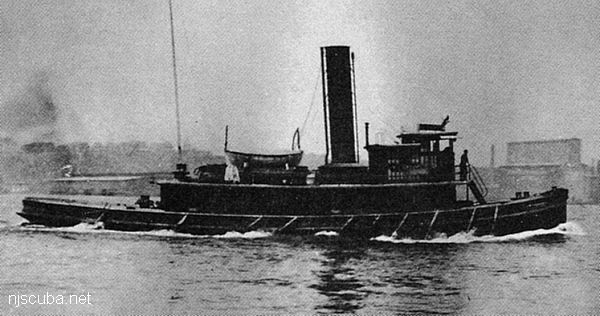
- Type:
- shipwreck, tugboat, USA
- Built:
- 1907, Neafie & Levy, Philadelphia PA USA
- Specs:
- ( 77 x 21 ft ) 122 gross tons, 13 crew
- Sunk:
- Thursday October 19, 1922
unknown, related to smuggling during Prohibition - no survivors - Depth:
- 80 ft

hull intact, upright, broken bottles and human remains
The old hands tell me that the Lizzie D is today not much more than a picked-over tub, and not much of a dive anymore.
Lizzie D

A tugboat weighing 122 gross tons, the Lizzie D was 15 years old and valued at $25,000 when she sunk on October 19, 1922. According to the owner's casualty report, filed with the Department of Commerce's Bureau of Navigation, the 84 foot tug was on a "cruise of the narrows, " carrying no cargo, but with eight crew members on board when she went down. The Lizzie D was reported sunk due to unknown reasons. All of her crew were lost.
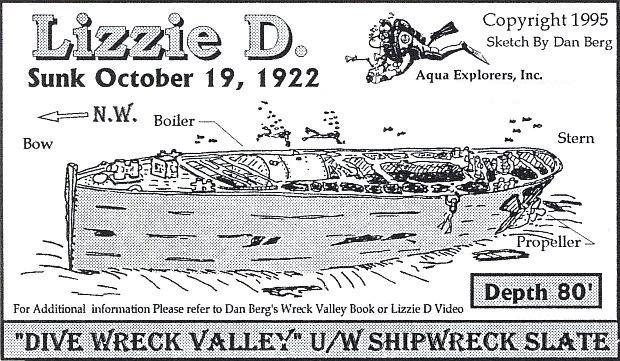
In July of 1977, Captain John Larsen located the wreck. He discovered that this was not just a sunken tugboat, but a prohibition rum runner. Joan Fullmur recovered the ship's bronze bell, which identified the wreck. Also recovered were portholes and crates full of 100 proof Kentucky bourbon and Canadian rye whiskey. This first group of divers on the Lizzie reported that the whiskey "still smelled good". Immediately after, divers from all over started to reap the bounty from this site. Her bronze helm was soon found 50 feet away, lying in the sand off her starboard bow.
Today, the Rum Runner, as she is more commonly known, rests in 80 feet of water, eight miles southeast of Atlantic Beach Inlet. Her hull sits upright and mostly intact except for the entire upper deck which lies in pieces surrounding the wreck. She looks like a giant rowboat with many openings in the main deck. Her boiler rises just over her deck, and openings ahead and astern allow easy penetration. Most of the cargo of full bottles is gone; her interior is littered with about two feet of broken glass and mud, but for the lucky few who dig in and around the wreck, intact bottles can still be found. If a diver is lucky enough to find an unbroken bottle, it is usually empty with the cork forced inside the glass. Increasing ambient pressure during the sinking compressed the small amount of air in a full bottle, causing the cork to be sucked inward. Bourbon bottles seem to hold their corks the best due to the shape of the bottle's neck. Therefore, whenever a bourbon bottle is found, the chances are much greater that it may still contain whiskey. Fishermen can hit the Rum Runner on their way to or from almost any of the west end's deep fishing grounds.
Excerpted from Wreck Valley CDROM by Dan Berg
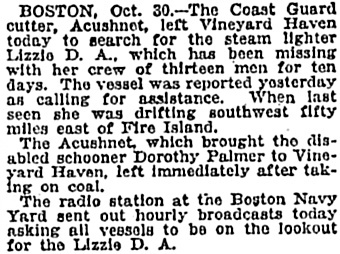
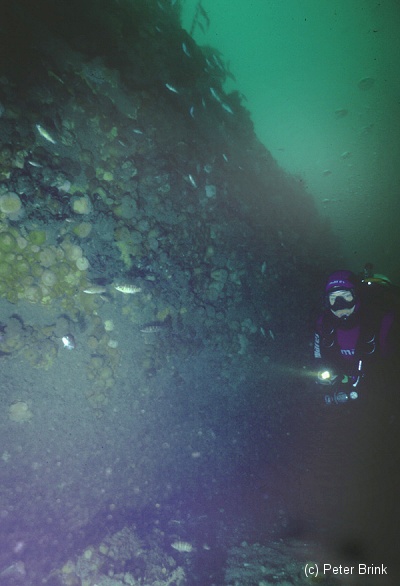

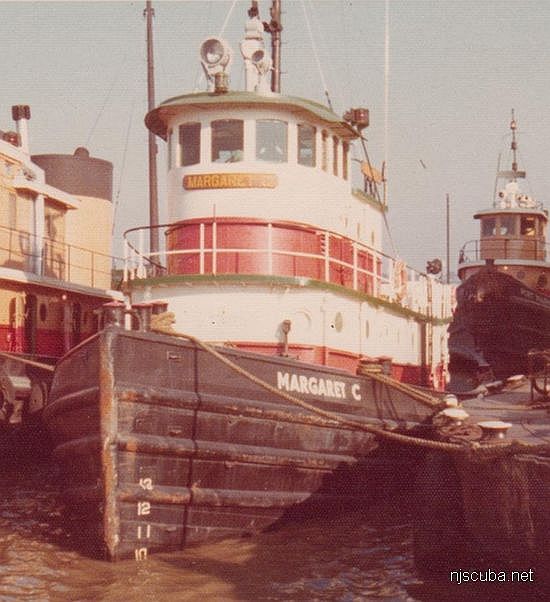
Questions or Inquiries?
Just want to say Hello? Sign the .